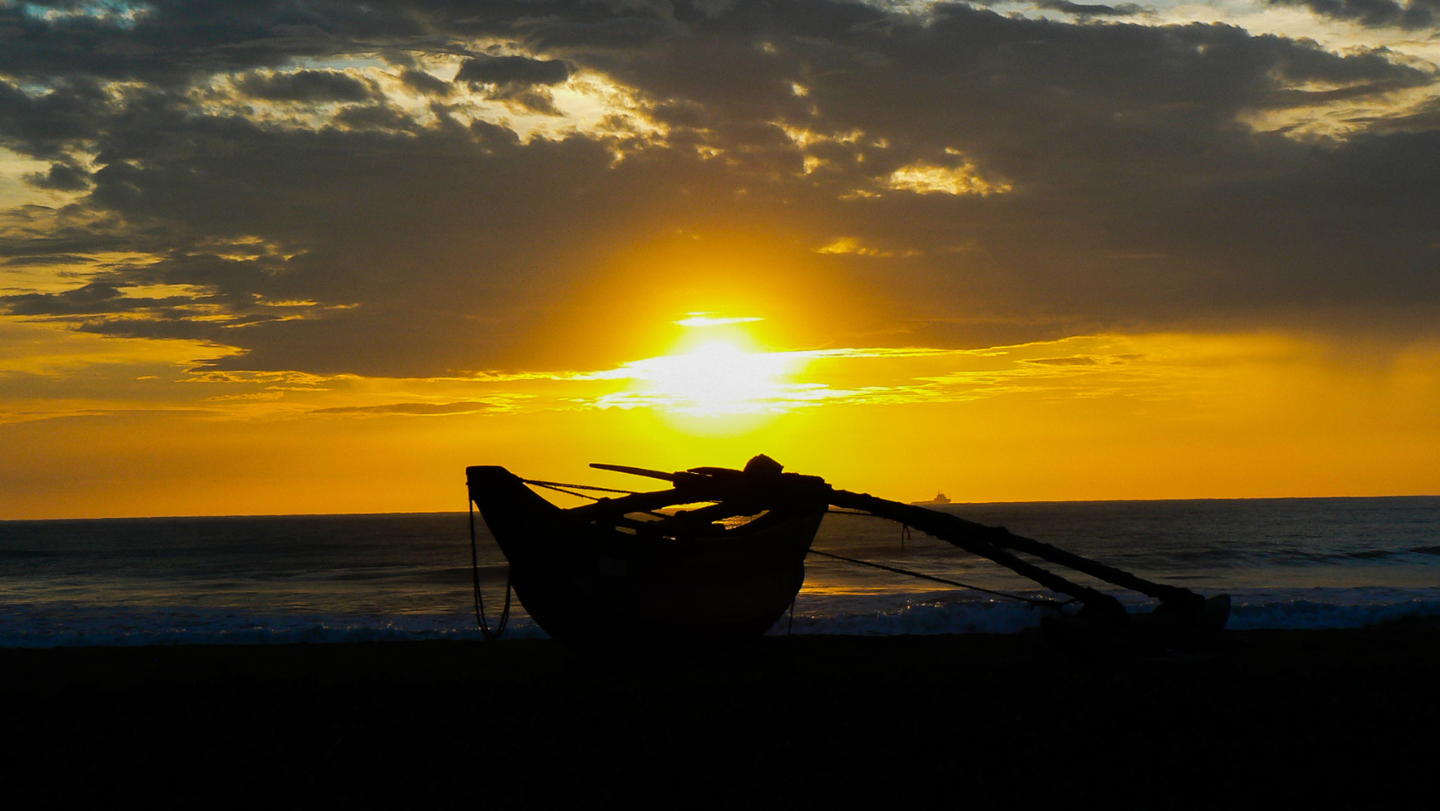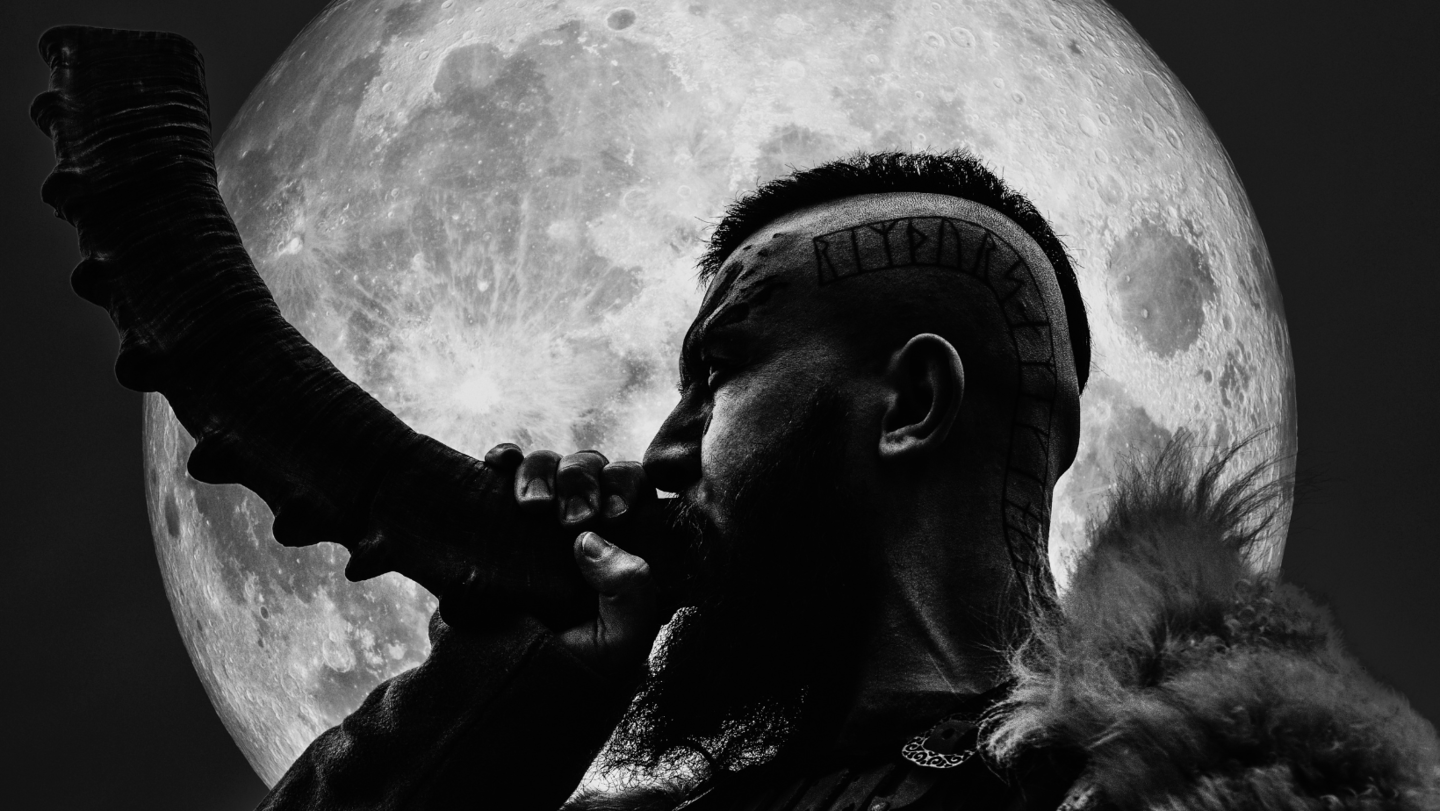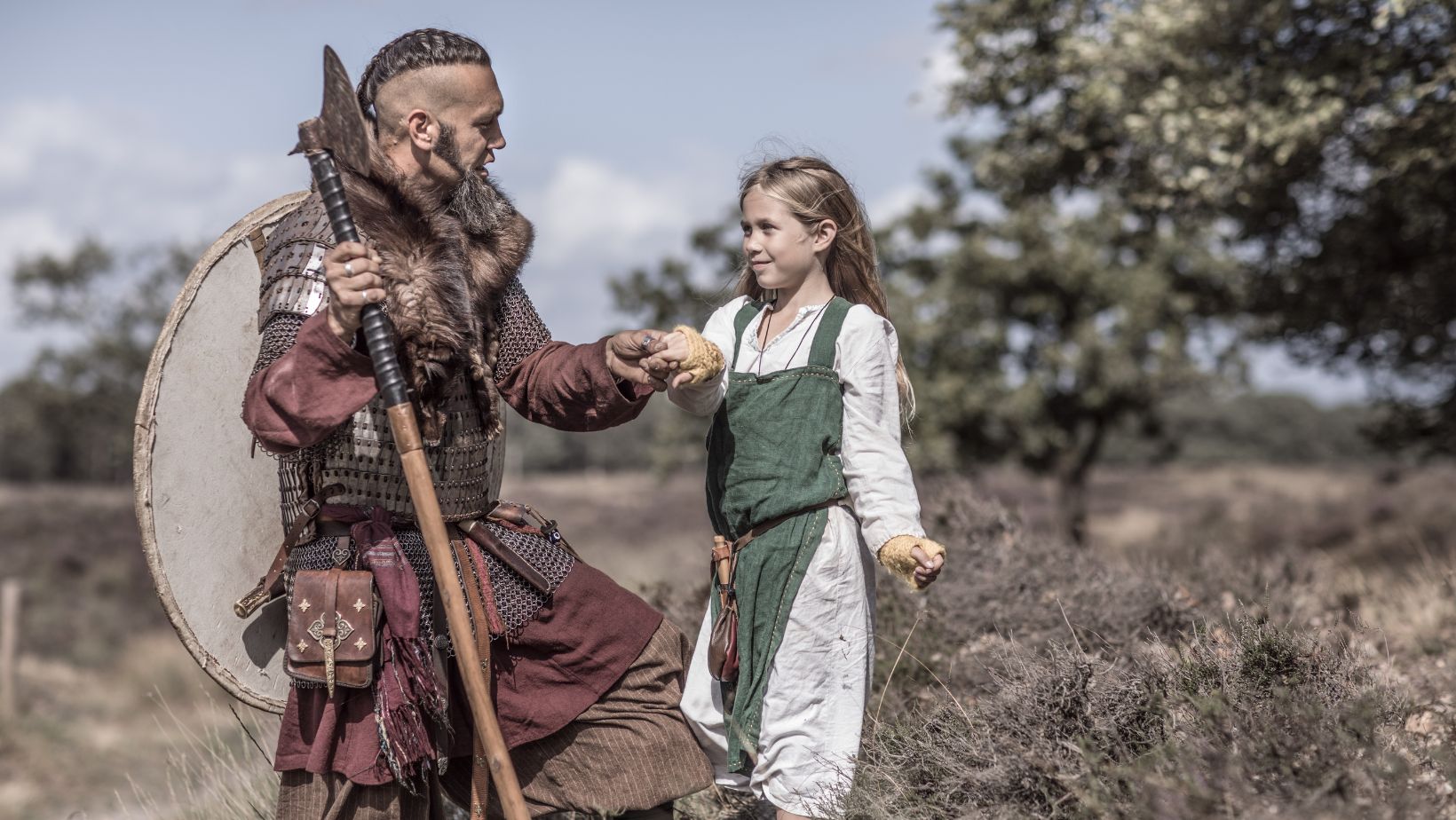Ever wonder about the bold seafarers of yore, their eyes fixed on the horizon, hearts pounding with adventure and ambition? Well, that’s our topic today: why did Vikings explore new lands?
These Norse adventurers embarked on voyages into the unknown in an era before GPS or reliable maps. Their longships cut through icy waves as they chased riches, fame, and a desire for more.
We’ll journey together to uncover why they left their homes in Northern Europe to conquer far-off shores like the British Isles and Ireland. We’ll learn how Viking warriors were not just raiders but early settlers seeking resources and personal freedom.
Get ready! I’m about to share tales packed with the fierce ambitions of power-hungry chieftains. They were driven by a need for fertile soils and lured in by stories from Irish monks who’d ventured even further. It’s time we dive into these gripping narratives and discover the answer to why did Vikings explore new lands!
Table Of Contents: Why did Vikings Explore New Lands?
- The Viking Age and Exploration
- Motivations for Viking Exploration
- North Atlantic Exploration by Vikings
- The Discovery of North America
- Comparing Viking Exploration to Other Explorers
- The Impact of Viking Exploration
- Challenges Faced by Viking Explorers
- FAQs in Relation to Why Did Vikings Explore New Lands
- Conclusion: Why did Vikings Explore New Lands?
The Viking Age and Exploration

Known for their daring voyages, the Vikings left an indelible mark on history during what we now call the Viking Age. This period saw these Norse seafarers venture far beyond their native Northern Europe.
Overview of the Viking Age
This era, beginning in the late eighth century and continuing through to the early eleventh century, was characterized by expansive exploration. The Vikings traveled great distances across uncharted seas, searching for land and treasure. The complex motivations behind the exploration of this era were a combination of economic necessity, political ambition, and cultural belief.
A vital part of this culture was pagan beliefs that drove many aspects of life during this time. If you want to learn more about how religion influenced these intrepid explorers’ lives, Britannica’s guide to the Old Norse language, which offers insights into mythology and everyday vocabulary from this time period, is highly recommended.
The Role Of Raids In Viking Exploration
Raiding played a significant role, too. While infamous for their brutal raids on monasteries along coastal areas such as northern Scotland or northeastern coastlines elsewhere (yes indeed, Vikings reached North America before Columbus.), not all journeys had violent ends. They traded goods such as timber, iron, furs, amber, whale, and walrus ivory with other cultures they encountered.
The raiding parties were usually made up mainly of Viking warriors, tough men who could withstand harsh conditions at sea aboard longships – those sleek, fast-moving vessels we associate so closely with them today.
Naturally, though, there were difficulties; venturing into unknown waters is never easy. Yet these explorers were undeterred, their ambition and curiosity-fueling their resolve to discover what lay beyond the horizon.
These Norse settlements often led to significant cultural exchanges with indigenous populations. This exploration period truly helped shape the world as we know it today – a testament to how Viking exploration influenced history.
Key Takeaway: Why did Vikings Explore New Lands?
The Viking Age, marked by bold voyages and cultural exchanges, wasn’t just about exploration for the thrill. A complex blend of economic need, political ambition, and religious belief drove these Norse seafarers beyond their Northern European homes. Despite the challenges of uncharted waters, they remained undeterred in their quest to discover new lands.
Motivations for Viking Exploration
Vikings were not just warriors but explorers who sought new lands and resources. They had various motivations pushing them toward the horizon.
Resource-Driven Exploration
The lure of natural resources was a powerful motivation for Vikings. Riches like timber, iron, and amber weren’t always available in their home territories.
In search of these precious commodities, they sailed across oceans and established colonies far from home. Fame also came along with such adventurous exploits.
Political Ambitions and Personal Freedom

Beyond tangible wealth, Viking raids expanded their political influence as well as personal freedom. In an era where kingship could be volatile back home in Scandinavia,
sailing to distant shores offered opportunities for ambitious individuals to establish themselves without pre-established government constraints or competition.
Finding the Drive: A Closer Look at Motivations
- Natural Resources: Land back in northern Europe was limited; finding new fertile land meant access to crops like barley, which were used heavily in brewing beer – a favorite pastime amongst many Norsemen.
- Fame & Glory: Successful voyages brought fame, often securing a leader’s position within their society, boosting both status and influence.
- Political Influence: With new territories came the chance to create a new order of things. This offered an attractive proposition for those seeking to carve out a niche without existing political pressures back home.
- Personal Freedom: Many Vikings saw exploration as a ticket to freedom. It offered them opportunities that their homeland couldn’t match.
North Atlantic Exploration by Vikings
The Viking’s voyages to the North Atlantic islands, such as Faroe and Greenland, show their great maritime skill. These journeys weren’t just bold adventures; they were crucial for survival.
Exploration of the Faroe Islands
In the ninth century, Norwegian Vikings set foot on the Faroe Islands. They found these sheep islands off northern Europe enticing, with rich grasslands perfect for farming.
The Vikings established thriving settlements in this new land. But their voyage didn’t stop there. Their thirst for more led them further into the cold waters of the North Atlantic.
Journey to Greenland’s Coastal Waters
Piloting a Viking ship through treacherous coastal waters required immense skill and courage – traits abundant among these early settlers. Braving harsh weather conditions and navigating icy sea routes, they eventually reached modern-day Newfoundland or Vinland as it was then known.
A Viking explorer named Bjarni first sighted this green landscape, but Erik’s son Leif decided to explore its northeastern coast extensively – giving birth to some key Viking sites.
Viking Warriors Conquer New Lands

The audacious voyages made by these intrepid warriors had profound implications for themselves and future generations around the British Isles and Northern Scotland, especially where Celtic admixture became prominent due to frequent interactions with Norsemen over centuries.
The Icelandic sagas, though often embellished, provide a fascinating account of these explorations. These historical narratives celebrate Vikings’ spirit of adventure, transforming them from mere raiders to settlers in new lands.
No matter how we view it – as daring exploits or desperate quests for survival – the Vikings’ North Atlantic exploration is an incredible chapter in human history.
Key Takeaway: Why did Vikings Explore New Lands?
Exploring new lands wasn’t just a thrilling adventure for Vikings; it was crucial to their survival. With incredible seafaring skills and courage, they journeyed from the Faroe Islands’ lush grasslands to Greenland’s icy coasts, creating settlements along the way. Their audacious voyages left lasting impacts on places like Britain and Northern Scotland.
The Discovery of North America
Let’s sail back roughly 500 years before Christopher Columbus set foot on American soil. Here, we find the true pioneers – the Vikings, led by Leif Eriksson. They were fierce warriors and daring explorers who first reached North America.
Leif Eriksson’s Journey to North America
Eriksson embarked on a voyage that would change our understanding of world history. The ten best books about Vikings all recount his fateful journey into unknown waters.
Folklore suggests he was blown off course while sailing from Norway to Greenland, yet this twist of fate led him and his crew to discover a new land which they named Vinland for its fertile lands and grapevines.
Today, Vinland is believed to be modern-day Newfoundland, located on the northeastern coast of Canada. This revelation came long before Columbus even thought about crossing the Atlantic Ocean.
This remarkable discovery highlights Viking seafaring prowess and their ability to adapt under harsh conditions with limited resources – characteristics genuinely worthy of admiration. So next time you hear someone say Columbus discovered America, let them know it was actually an adventurous Norseman called Leif Eriksson.
Comparing Viking Exploration to Other Explorers

The exploration of North America is often credited to Christopher Columbus, but it’s worth noting that the Vikings had already set foot on this vast continent about 500 years earlier. Their exploration approach differed in many ways from later explorers.
Viking explorations were primarily motivated by trade, resource acquisition, and expansion of political influence. Unlike Columbus, who sailed under the patronage of a monarchy with religious undertones guiding his voyage, Vikings pursued their adventures out of personal ambition or necessity. They ventured into unknown territories like true entrepreneurs, not as commissioned agents.
Compared to other explorers such as John Cabot or Vasco da Gama, whose voyages were backed by strong monarchies offering financial support and military protection, Vikings’ expeditions were mostly self-funded and risky ventures.
Their ships – fast-moving longboats built for shallow coastal waters – contrasted sharply against galleons designed for deep sea navigation used by later European sailors.
A New Perspective on Discovery
The way we understand ‘discovery’ also needs revision when comparing Viking exploration to others.’ For example, Christopher Columbus’ ‘discovery’ was largely based on his mistaken belief he’d found a new route to Asia, while Erikson’s journey was intentional; they knew they were venturing into uncharted lands beyond known boundaries.
Navigational Skills Comparison
Vikings relied heavily on traditional navigational methods such as observing birds and whales and using landmarks. Their lack of compasses or complex astronomical tools didn’t deter their exploratory spirit. Leif Erikson, for instance, successfully led an expedition to Vinland (modern-day Newfoundland) without the aid of sophisticated navigational equipment.
On the other hand, Columbus and his contemporaries used advanced instruments like astrolabes and quadrants and knowledge from earlier seafarers’ experiences to navigate vast oceans. This showcases their ability to blend innovation with inherited wisdom for successful navigation.
Key Takeaway: Why did Vikings Explore New Lands?
Vikings set foot on North America 500 years before Columbus, driven by trade, resources, and political expansion. Unlike other explorers backed by monarchies, Vikings were risk-takers sailing self-funded expeditions in longboats suited for coastal waters. Their discovery was intentional – they knew they were exploring unknown territories without the aid of advanced navigational tools.
The Impact of Viking Exploration

Unearthing the tales of ancient Norse seafarers, we delve into how Viking exploration profoundly impacted regions such as the British Isles and Ireland. Let’s embark on this fascinating journey.
Impact on the British Isles
Viking exploration brought significant changes to the cultural landscape of the British Isles. Known for their fierce warriors, Vikings were traders exchanging goods like amber and furs with local populations.
Northern Scotland was one area that experienced a high degree of Scandinavian influence due to Viking settlements. This genetic footprint is still evident in modern DNA studies. In fact, according to research data from PLOS Genetics, there are pockets in northern Scotland where up to 30% carry Norse genetics today.
Influence on Ireland
Moving over to Ireland, it’s impossible not to be awed by how much Vikings shaped its development, too, from Dublin down southwards towards Waterford – cities that owe their origins mainly to these early settlers from Northern Europe.
Ireland wasn’t just an incidental landing spot; it became a vital part of their trade network across the North Atlantic Ocean, drastically transforming its socio-economic fabric.
But let’s not forget about those fearsome Viking warriors because they left an indelible mark throughout Irish history books.
We’ll never know exactly what happened during each voyage or battle between these two groups, but we can get some insight through Icelandic sagas – historical narratives penned by the Vikings themselves. These sagas are invaluable in piecing together their explorations and understanding how they shaped places like Baffin Island, modern-day Newfoundland, and L’Anse aux Meadows.
By delving into Viking history, we can appreciate how this fascinating civilization made its mark across Europe. As an explorer or history buff, it’s a tale that truly inspires questions such as “Why did Vikings explore new lands?”
Key Takeaway: Why did Vikings Explore New Lands?
The Viking’s lifestyle and their daring voyages. Their influence on regions such as the British Isles and Ireland is immense, altering genetic patterns and socio-economic structures. As fierce warriors and skilled traders, they left their mark in northern Scotland and set up bustling cities along trade routes across the North Atlantic Ocean. The Icelandic sagas provide us with a wealth of knowledge about these adventurous seafarers.
Challenges Faced by Viking Explorers
Viking explorers braved numerous obstacles in their quests for new lands. Among the most daunting was navigating the harsh conditions of the North Atlantic Ocean.
Navigating the North Atlantic Ocean
The open ocean presented many dangers to these seafaring warriors. Navigating through ice fields and dealing with unpredictable sea creatures were constant threats.
Their iconic longships, built for speed and durability, faced significant damage from floating icebergs in Greenland’s coastal waters. As an added challenge, getting lost amidst dense fog made navigation a nightmare even for experienced mariners.
Another primary concern on their voyages was encounters with massive sea creatures like whales, which could capsize smaller vessels. But despite these challenges, they pushed onward – such was their spirit of exploration.
Viking shipbuilding techniques were impressive feats of engineering but also significantly impacted northern Europe’s forests, causing environmental changes that are still noticeable today.
- Viking shipbuilders used vast amounts of timber, resulting in deforestation across parts of Scandinavia.
- Icelandic sagas tell tales about how Vikings often resorted to beaching their ships at night due to a lack of safe harbors or anchorages along unexplored coastlines.
Despite facing such hardships during expeditions into unknown territories, acknowledging Viking perseverance and learning from it is essential.
These brave men ventured out into uncharted waters without any assurance or pre-established government support yet managed successful explorations throughout Northern Europe and beyond.
Their tenacity and determination are an example to all those who will come after them, facing their own struggles in uncharted waters.
Learn more about the Vikings and how they managed to leave such a significant mark on history despite these incredible odds.
Key Takeaway: Why did Vikings Explore New Lands?
Viking explorers braved the rough North Atlantic Ocean, navigating ice fields and dangerous sea creatures. They pressed on despite the threat of damaging their longships on floating icebergs or getting lost in dense fog. Their spirit of exploration led to successful voyages across Northern Europe and caused noticeable environmental changes due to deforestation for shipbuilding. These journeys testify to human courage and innovation in our shared history.
FAQs in Relation to Why Did Vikings Explore New Lands
Why did the Vikings explore other lands?
Vikings explored new territories driven by a need for resources, political power, and personal freedom.
Why were the Vikings looking for new land?
The quest for more fertile farming land and trade opportunities spurred Vikings to seek out fresh territories.
Why did the Vikings explore the new world?
Viking explorer Leif Eriksson journeyed to North America around 1000 AD in search of wealth and adventure long before Columbus.
Why did the Vikings invade other lands?
The Norsemen invaded foreign regions primarily as part of their seafaring culture, hunger for riches, and territorial expansion objectives.
Conclusion: Why did Vikings Explore New Lands?
Our journey into the past is nearing its end, but what a voyage it’s been! We’ve discovered why did Vikings explore new lands, from their thirst for resources to political ambitions and personal freedom.
We traced their routes across North Atlantic islands. Faroe Islands, Greenland – these were not mere names on a map but homes they carved out of wilderness.
From Leif Eriksson’s trailblazing expedition that made them the first Europeans in North America to how they left indelible marks on places like the British Isles and Ireland – we’ve seen it all!
As we drop anchor here, remember that exploration was more than an adventure for Vikings. It shaped histories far beyond their homelands in Northern Europe. A legacy that resonates even today!
So, why did Vikings explore new lands? Now you know!

